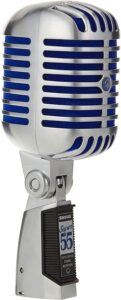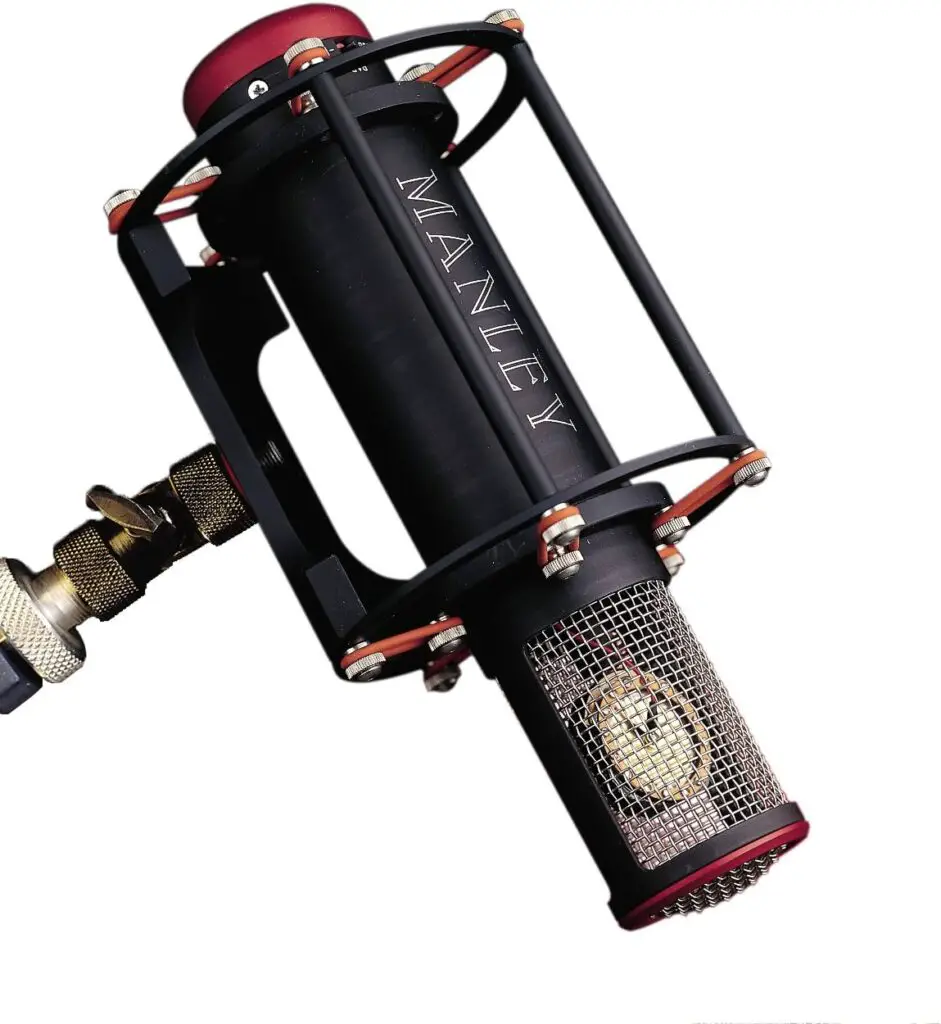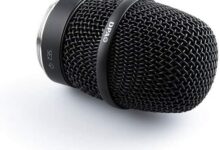When shopping around for a new microphone, there are quite many things to consider, and that includes the polar pattern.
Based on polar pattern structuring, there are two major types of microphones used by different people globally – cardioid and super-cardioid.
What is the difference between cardioid and supercardioid? Super-cardioid and cardioid are microphone polar patterns; the former features a tighter pickup angle than the latter and is more sensitive.

In other words, cardioid uses unidirectional patterns, while super-cardioid uses slightly less directional patterns.
Basically, any of these mic types can be used in a studio, outdoor environment (live events), for vocals, and other purposes.
But then, each of them is specifically meant to serve a specific purpose. This article clearly explains the differences between cardioid and super-cardioid polar patterns.
Table of Contents
What is a Cardioid Mic?
“Cardioid” in its basic meaning refers to the shape of the human heart.
Cardioid microphones have a polar pattern crafted like that of the human heart – much more sensitive sound waves coming upfront than the ones coming from the rear.
Notwithstanding, cardioid mics can receive signals coming sideways.
Cardioid microphones are commonly used when trying to record sounds inside a studio or room.
Cardioid polar patterns are mainly used in condenser microphones (studio mics) – such mics can oust little background noise and provide clearer feedback.
Put simply; cardioid mics are attentive to sounds coming from one or two specific directions, eliminating sound waves from other directions.
Cardioid mics have high sensitivity at 0 degrees (on-axis) and the least sensitivity at 180 degrees (off-axis). A cardioid mic picks up about one-third as much ambient sound as an omnidirectional one would pick.
The Best Cardioid Mic In The Market
- Shure KSM32/SL Embossed Single-Diaphragm Cardioid Studio Microphone
- HyperX SoloCast – USB Condenser Gaming Microphone
- Audio-Technica AT2020 Cardioid Condenser Studio XLR Microphone
- Neumann KM 184 Stereo Cardioid Microphone
- Manley Reference Cardioid Microphone
- Shure SM7B Vocal Dynamic Microphone
- Neumann TLM-193 Cardioid Condenser Microphone
- Rode NT1-A-MP Stereo Cardioid Condenser Microphones
- Beyerdynamic MC930 Small Diaphragm True Condenser Cardioid Mic
- Sennheiser Professional MKH 416-P48U3 Mic
- Audio-Technica Condenser Microphone
- Audio-Technica AT4047MP Cardioid Condenser Microphone
- Neumann KM184 MT Miniature Condenser Cardioid Mic
- Neumann U 87 Ai Set Z Mic
What is a SuperCardioid Mic?
Supercardioidis more like a type of “cardioid” polar pattern, but it is quite different. This type of microphone has tighter reception patterns, so they are directional – too sensitive on the on-axis and less sensitive to the off-axis.

Audio experts use this type of mics to isolate sound waves from an adjacent system or device, thanks to the narrower front pickup angles offered by super-cardioid patterns.
Also, super-cardioid microphones can rejector produce less ambient sounds, depending on how it is placed.
Put simply, a super-cardioid mic can perfectly isolate room noise and sound/noise from nearby devices/instruments; it can also pull more resistance to feedback than a cardioid mic.
But then, super-cardioid mics require the user to keep proximity in front of the mic.
The Best SuperCardioid In The Market
- Sennheiser Professional MD 441-U Dynamic Super-Cardioid Microphone
- Shure Super 55 Deluxe Vintage Supercardioid Dynamic Unidyne Mic
- Shure BETA 87A Supercardioid Mic
- Sennheiser Pro E 945 Dynamic Super-Cardioid Vocal Microphone
- Shure BETA 52A Kick Drum Supercardioid Dynamic Mic
- Sennheiser Pro EW 100-845S Wireless Condenser Supercardioid Microphone
- Electro-Voice ND86 Dynamic Supercardioid Mic
What is The Difference Between Cardioid and SuperCardioid?
| Mic | Cardioid | Super-Cardioid |
| Usage | Noise-controlled environments like studios | Usually, in unavoidably noisy environments |
| Polar Pattern | Unidirectional | Omnidirectional |
| Receptiveness | Medium | High |
| Clarity/Less Distortion | Low distortion | Distortion may be high |
The main difference between these two microphone types is their rear sensitivity and patterns.
Super-cardioid microphones can pick up sound waves from a distance because their patterns allow wide and natural pickups; they are mostly used to capture sounds from a group of vocalists singing together – or when you need just one mic to capture all sounds from different instruments at the same time. Super-cardioid mics are prone to feedback.
A cardioid mic can pick up from any angle around 131 degrees; it is a decent microphone to record sound from just one or a maximum of two vocalists – if you need to pick up more singers/vocalists, this is not the best type of mic for that – and can also pick up a vocalist with a wandering mic technique. The cardioid mic polar pattern is ideal for feedback rejection.
You can use cardioid mics for drum overheads or as a snare and bass amp mic – bidirectional between toms and congas.
A pair of cardioids can easily fit under any piano lid, while you may want to place a super-cardioid hanging on a guitar amp.
Mainly, super-cardioid microphones can use placed on film or TV sets to pick up directional sound or used in live events for directional pickups.
Choosing between cardioid and super-cardioid starts with understanding the polar pattern you need for the sound event you’re pioneering.
Whether you choose cardioid or super-cardioid, you have to strategically place the mic based on its most sensitive and least sensitive angles for effective pickup.
Either cardioid or super-cardioid can eliminate unwanted noise depending on how the mic is placed in correspondence to the direction of the sound waves.
But then, a cardioid dynamic microphone would be the best option if you need to minimize the amount of side pickup from other instruments in a live event.
In comparison, a super-cardioid mic may be best if you need to particularly get recording vocals in greater detail without feedback from other instruments or devices around the environment.
Frequently Asked Questions
What Are Super-Cardioid Microphones Used For?
Owing to the way super-cardioid mics are designed – and based on how they capture sound – they are often used on the live stage, usually in live concerts and outdoor events where there may be too much noise.u003cbru003eu003cbru003eThe narrowed sensitivity angle helps this type of mic minimize bleeds from other instruments on a busy stage.
When Should You Use A Cardioid Microphone?
Cardioid microphones are built for special purposes; well, every mic is built for specific purposes. u003cbru003eu003cbru003eCardioid mics are perfect for recording close vocals or any sound wave that is supposed to be “dry” and “close.”u003cbru003eu003cbru003eSome of these mics may have equal sensitivity from the front and rear and reject waves coming sideways.
Are Cardioid and Super-Cardioid Mics the Same?
They are not, but they have a few similarities. The main difference is in how they function and where they are designed to be used.u003cbru003eu003cbru003eChoosing between these two microphone types is largely based on user preferences.





